Defend your projects against water, fungi and insects with wood preservatives and protectors.
Our editors and experts handpick every product we feature. We may earn a commission from your purchases.Learn more.
Defend your projects against water, fungi and insects with wood preservatives and protectors.
Our editors and experts handpick every product we feature. We may earn a commission from your purchases.Learn more.
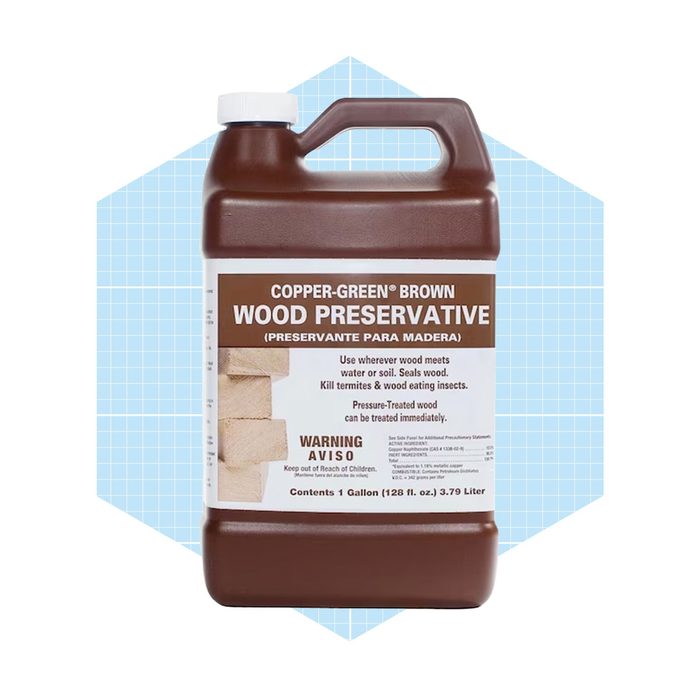 via merchant
via merchant
Perhaps the most common wood preservative available to DIYers, oil-based copper naphthenates are classified for general use by the EPA. It’s commonly used as a brush-on preservative for end cuts on pressure-treated lumber.
Per the EPA, copper naphthenates also protect above-ground and ground-contact wood against insect damage, with low toxicity for humans.
Copper-Green Brown Wood Preservative is a great example. Like oil-based paints, it goes on easy, cleans up with mineral spirits and doesn’t smell great when first applied. That lingering odor makes it a poor choice for interior projects, but it’s a good option for exterior projects like treating deck posts. The brown color looks good on more visible items like fence posts or landscaping timbers.
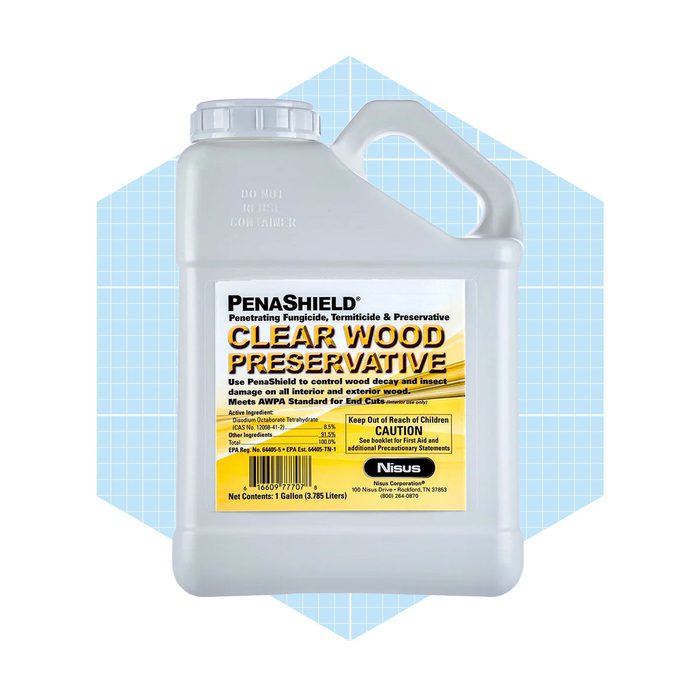 via merchant
via merchant
On the other hand, borate-based wood preservatives are water-based with a significantly less offensive odor. These are often used on wood for interior framing, like sill plates, sheathing and furring strips.
PenaShield Clear Wood Preservative is a notable example. It goes on clear and absorbs deep into the wood, protecting it from the inside. Once dry and cured, wood treated with this can be painted or sealed.
As the manufacturer notes, “indoors PenaShield will last for the lifetime of the wood, and outdoors it will last for the length of the applied water repellent.”
If you’re interested in borate wood preservatives, look for the active ingredient disodium octaborate tetrahydrate (DOT).
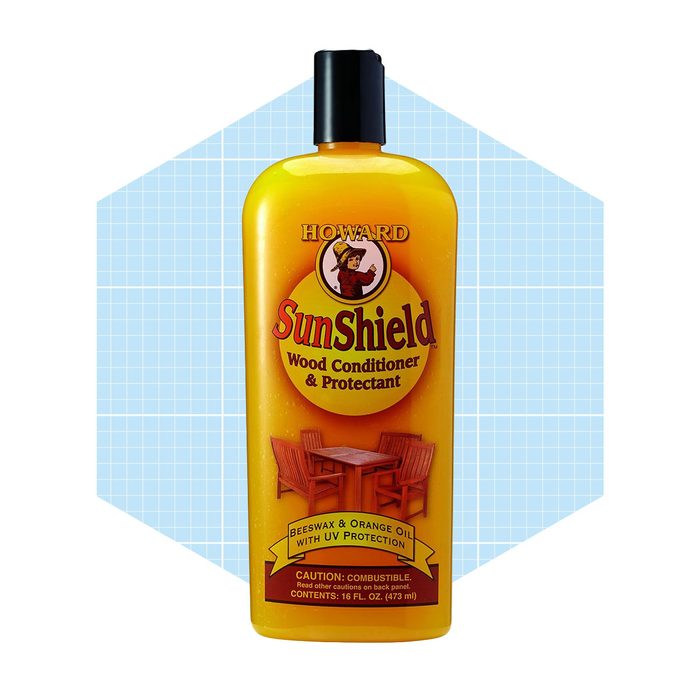 via merchant
via merchant
For many DIYers, a wax-based preserver is the first thing that comes to mind when they think of wood preservatives. As mentioned earlier, these products can’t technically be marketed as wood preservatives, but they do serve that purpose. A great example is Howard’s SunShield.
The blend of beeswax, orange oil and UV inhibitors absorbs into the wood, giving it a lustrous sheen while also protecting against exposure to sun and moderate rain. Because it’s not technically a wood preservative, it’s a great choice for indoor or patio furniture that will be used by children and/or near food.
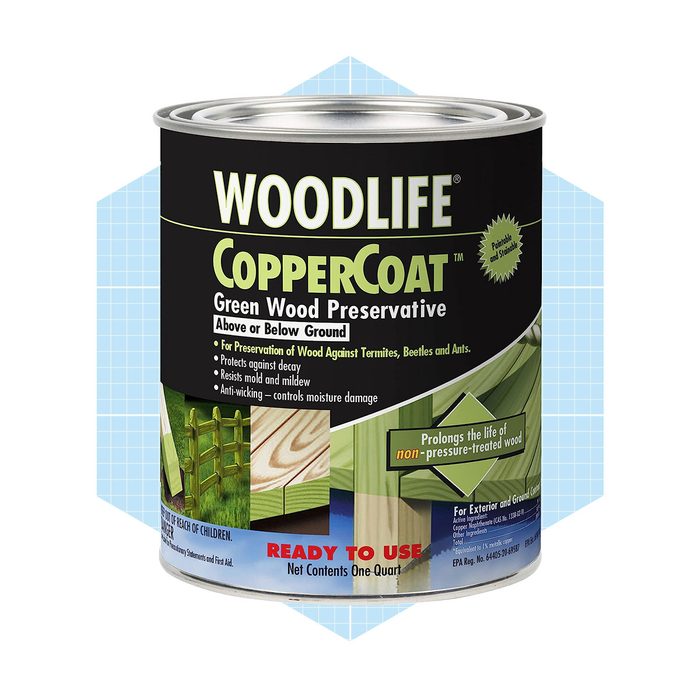 via merchant
via merchant
We don’t mean green as in Earth-friendly, but green the color!
If you’re touching up the ends of pressure-treated lumber, or blending pressure-treated and non-pressure-treated lumber on a project, go with Rust-Oleum’s Woodlife CopperCoat. Another copper naphthenate, CopperCoat doesn’t contain any tinting to hide the green coloration caused by the copper.
The manufacturer states it can be used in below-ground installations, and top-coated with paint or sealer after 24 hours.
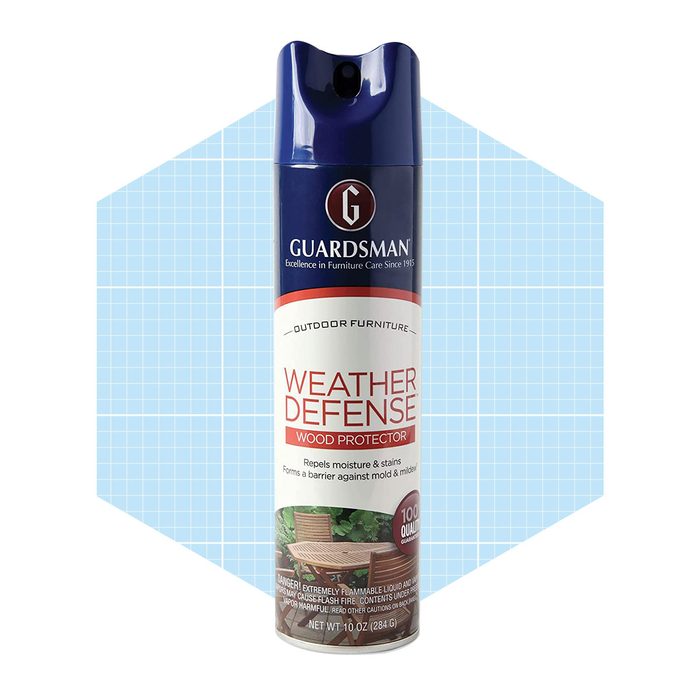 via merchant
via merchant
A spray-on wood protector makes for an easy, no-fuss application. Guardsman Weather Defense Wood Protector goes on like spray paint — simply shake, point and press the button. It defends against moisture and fungus, although it looks like it contains no pesticides.
The spray-can format also makes cleanup a breeze, with no rags or brushes to worry about. If you’re looking at a large project, spray-ons aren’t economically viable, But for smaller projects it’s a wonderful timesaver.
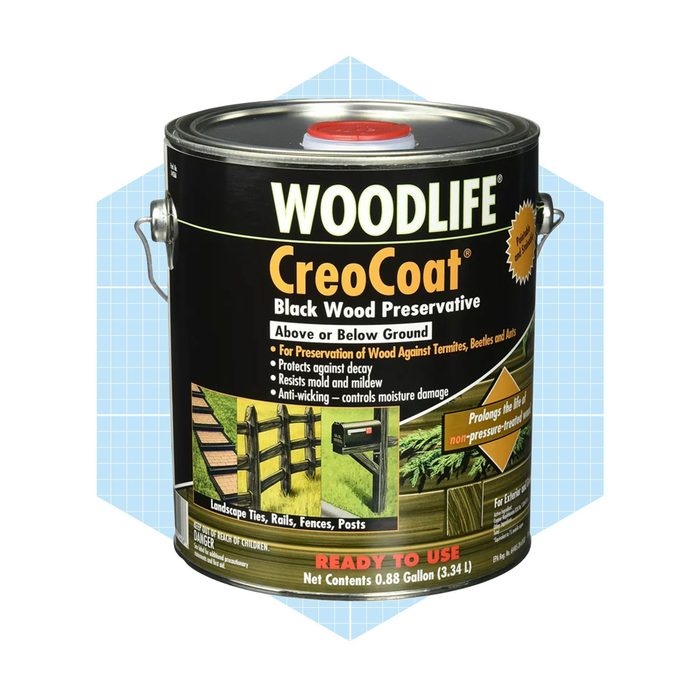 via merchant
via merchant
If you like the black-stained look of creosote-treated wood, Woodlife CreoCoat is a copper naphthenate that brings a retro look to your backyard. Rated for exterior and ground-contact wood, it’s tinted to resemble the
distinctive dark coloration of creosote.
Note: Actual creosote is only permitted in select commercial applications, and not available for residential purchase or use.
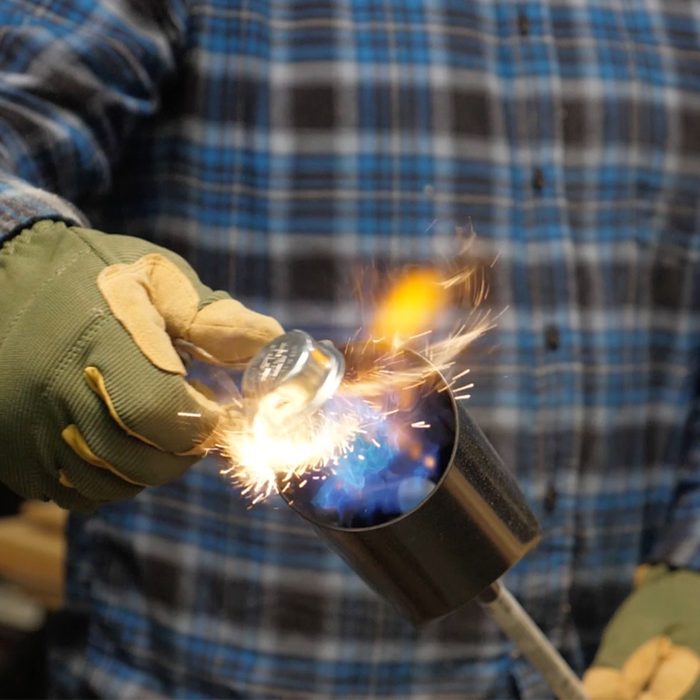 Family Handyman
Family Handyman
Our final entry is a technique rather than a treatment. Charring creates a hard surface on the wood, making it more resistant to insects, moisture and (perhaps counter-intuitively) fire.
This all-natural technique, good for interior or exterior projects, relies on zero chemical treatments. For more details, see this article on Shou Sugi Ban: The Art of Japanese Wood Burning.